1. Traffic Flow Optimization
AI is used to optimize traffic flow by intelligently controlling traffic signals and managing congestion in real time. Machine learning algorithms analyze live feeds from road sensors, cameras, and GPS data to adjust green-light durations and coordination between intersections. This dynamic signal timing reduces unnecessary stops and idle time, which smooths the movement of vehicles through busy corridors. As a result, commuters experience shorter travel times and fewer delays, while cities benefit from less congestion and lower vehicle emissions. AI-driven traffic flow systems make urban travel more efficient by responding adaptively to changing traffic conditions rather than relying on fixed signal schedules.
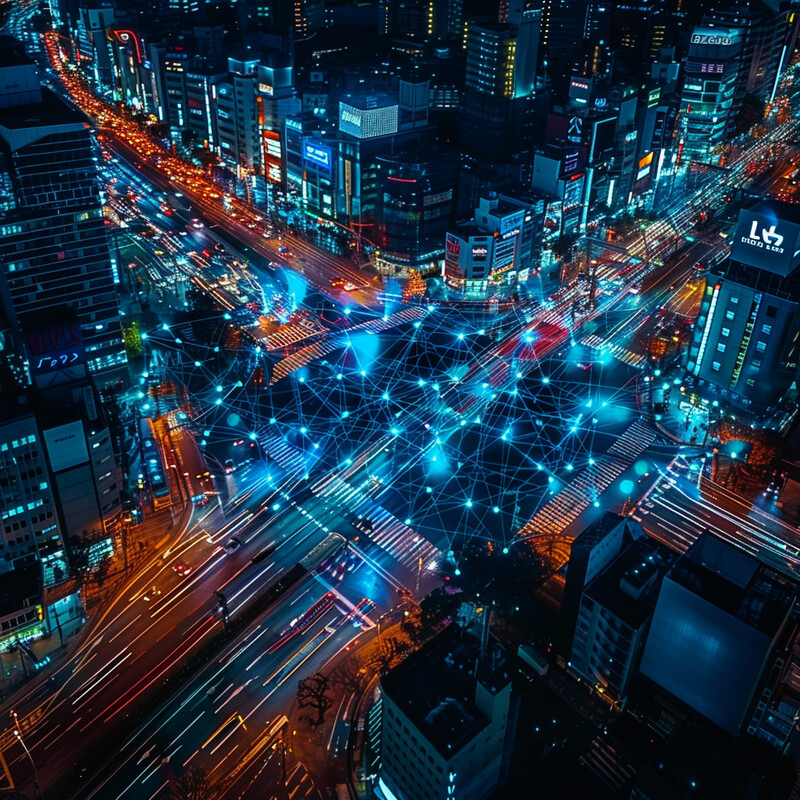
In 2025, a large-scale study of 100 highly congested cities found that using AI-driven adaptive traffic lights cut peak-hour travel times by about 11% on average. The same study projected substantial benefits from these optimizations, including a reduction in off-peak travel times by around 8% and significant fuel savings due to less stop-and-go traffic. For drivers, this translates to noticeably faster commutes during rush hour. These improvements were achieved by AI systems continually adjusting signal timings based on real-time traffic patterns. By implementing such AI traffic signal control, cities can not only move vehicles more efficiently but also enhance road capacity without physical expansions, demonstrating how AI can measurably improve traffic flow efficiency.
2. Incident Detection and Response
AI greatly improves the speed and accuracy of detecting traffic incidents (such as accidents or road blockages) and coordinating an effective response. Traditional incident detection often relies on 911 calls or traffic personnel noticing issues, which can delay response. In contrast, AI-powered systems use video analytics, connected vehicles, and sensor data to automatically identify crashes, stalled vehicles, or other anomalies within seconds. Once an incident is flagged, the system can alert traffic control centers and first responders immediately. Some AI systems even trigger adjustments in nearby traffic signals or digital signs to reroute drivers around the scene. By shortening the time between an incident occurring and authorities responding, AI helps clear disruptions faster and reduces the risk of secondary accidents caused by sudden slow-downs. Overall, AI-based incident detection leads to quicker emergency dispatch, better traveler information (through apps or highway signs), and safer, less congested roads after an incident.
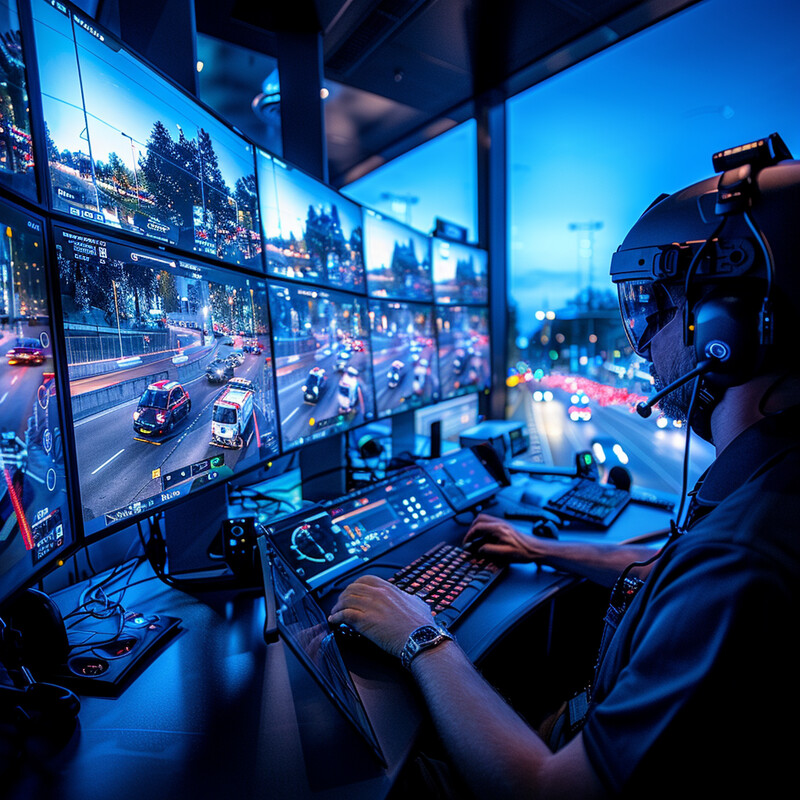
As of 2024, AI video analytics have achieved high accuracy (over 95%) in automatically detecting roadway incidents like stopped vehicles or wrong-way drivers. By catching accidents and hazards faster than human observers, these systems enable traffic managers to respond much more quickly. In practice, cities using AI-driven incident detection report cutting incident response times by up to 30%. For example, integrated platforms in some states fuse camera feeds and sensor data to recognize a crash and notify operators almost instantly, saving precious minutes. This rapid detection and response can prevent secondary collisions and minimize congestion growth around the incident. The result is a safer network – one study noted a substantial drop in secondary crash risk when AI systems shortened the duration of untreated incidents. In short, AI is making incident management more proactive, with fewer delays between a crash occurring and help arriving.
3. Predictive Traffic Modeling
AI is employed to forecast future traffic conditions using a combination of historical data and real-time inputs. By recognizing patterns in how traffic builds and dissipates, AI models can predict congestion hot spots before they occur – sometimes minutes or even hours in advance. These predictive traffic models consider factors like time of day, day of week, weather, special events, and live traffic speeds to generate short-term forecasts of traffic volume and travel times. City planners and traffic control centers use these AI predictions to take proactive measures (such as adjusting signal timing plans, issuing traveler alerts, or even restricting flows) before a traffic jam fully materializes. For drivers, predictive modeling can be integrated into navigation apps to suggest alternative routes or departure times to avoid expected delays. Overall, AI-driven predictive traffic modeling allows a shift from reactive traffic management to proactive strategies, where potential problems are anticipated and mitigated. This leads to more reliable travel, as both operators and travelers can plan around forecasts of congestion and prevent small slowdowns from snowballing into major gridlock.
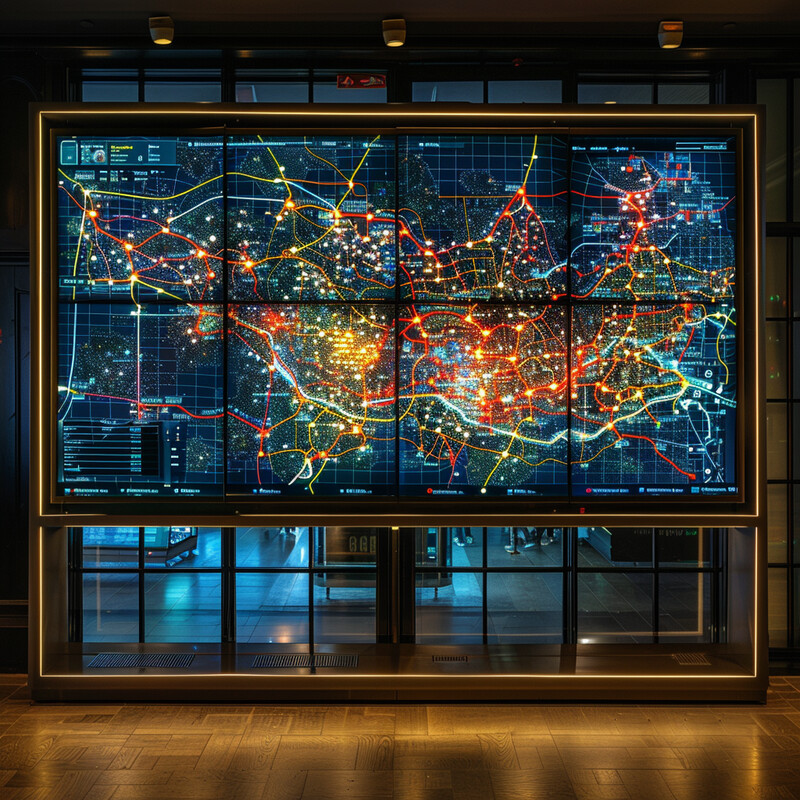
Advanced AI traffic prediction models today can forecast traffic congestion with over 90% accuracy about 15–30 minutes before it happens. For instance, pilot programs have shown that machine-learning models analyzing live traffic and past trends can reliably predict a traffic jam 20 minutes in advance. This high level of accuracy means traffic managers can trust these forecasts to activate preventive measures (like ramp metering or congestion pricing) ahead of time. Drivers also benefit through navigation systems that warn of impending slowdowns and recommend faster alternate routes. In practice, such AI-driven forecasting has been used in major cities to optimize traffic signal plans for the expected conditions, resulting in smoother flows. The ability to anticipate congestion with 90%+ precision is a game-changer for urban mobility, letting cities and commuters stay one step ahead of traffic rather than just reacting to it once delays have already formed.
4. Public Transport Management
AI plays a pivotal role in improving the efficiency and reliability of public transportation. By analyzing data on passenger demand, vehicle locations, and traffic conditions, AI systems can optimize transit schedules and routes in real time. For example, buses can be automatically re-routed around heavy traffic, or extra trains can be dispatched when crowds are detected, all based on predictive algorithms. AI-enabled dispatch systems help transit agencies match service levels with current demand – increasing frequency on busy corridors and reducing it on empty ones – which minimizes wait times for riders. Additionally, AI supports transit signal priority, where traffic lights turn green sooner for approaching buses or trams, keeping them on schedule. These adjustments lead to improvements like better on-time performance and shorter travel durations for commuters. By continuously learning from data (like which bus stops see unexpected surges or where delays frequently occur), AI can assist transit operators in planning more robust timetables and routes. In summary, AI-driven public transport management yields a more responsive transit system that improves rider satisfaction through more timely service and efficient operations.
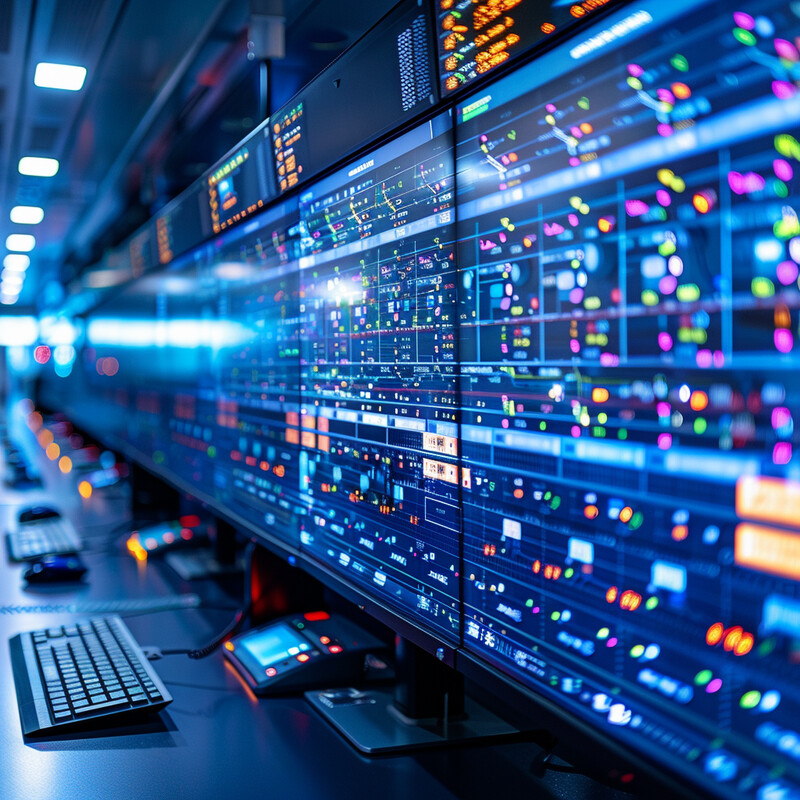
In California, a pilot of an AI-powered transit signal priority system dramatically improved bus performance – travel times on one high-ridership bus route dropped by 18–20% after deployment. This project, implemented by Santa Clara Valley Transportation Authority (VTA) in San Jose, used AI to adjust traffic lights in favor of buses on route 77. By processing live bus GPS data and predicting arrival times at intersections, the system extended green lights to reduce bus delays. The result was a five- to six-minute reduction in signal-related delays on the route, keeping buses closer to schedule. Other transit agencies (from New York to Saskatoon) are testing similar AI solutions for maintenance and scheduling, seeing gains in efficiency like lower vehicle idle time and fewer bus bunching incidents. These real-world results show that AI can significantly enhance public transport reliability and speed. For riders, that means shorter commutes and better odds that their bus or train arrives on time, thanks to AI optimizing the system behind the scenes.
5. Pedestrian Safety Improvements
AI technologies are being deployed to enhance pedestrian safety in busy traffic environments. Smart camera systems powered by AI can monitor crosswalks and sidewalks, identifying potentially dangerous situations like a pedestrian starting to cross when a car is turning. These systems detect risky behaviors (e.g. jaywalking or drivers not yielding) and can trigger warnings – such as flashing lights or audible alerts – to both pedestrians and drivers in real time. Additionally, AI-controlled traffic signals can automatically adjust crossing times if, for example, a slower-moving person is still in the crosswalk. By analyzing patterns in near-misses or high-risk areas, AI helps city engineers redesign intersections or implement new safety measures proactively. Some cities have adopted AI-based pedestrian detection at intersections that will hold a red light for cars if a person is still in the crossing zone. Overall, AI adds an intelligent layer to pedestrian safety, reacting faster than human operators and even foreseeing collisions before they happen. This leads to fewer accidents and a safer walking environment, as the technology is constantly watching for threats and intervening to protect pedestrians.
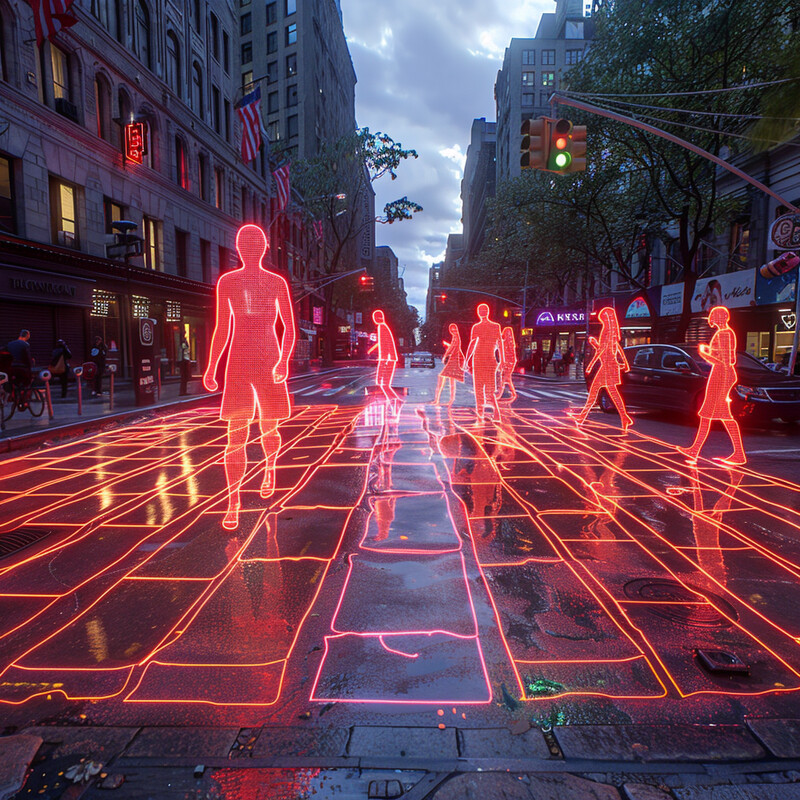
A recent urban pilot program using AI video analytics at intersections reduced pedestrian accidents by 25% in its first year. In this trial, AI cameras continuously monitored several high-risk crosswalks and identified dangerous situations (like vehicles running red lights or pedestrians crossing against signals). When a potential collision was detected, automated alerts and signal changes were activated to prevent an accident. Over twelve months, the intersections equipped with the AI system saw a quarter fewer pedestrian-related crashes compared to the previous average. Encouraged by this success, the city expanded the program to more intersections, expecting similar safety gains. Other cities worldwide are seeing benefits too: London’s transport agency, for instance, reported notable decreases in pedestrian incidents after deploying AI-powered surveillance at busy crossings. These results underline that AI can significantly bolster pedestrian safety, catching hazards that humans might miss and responding instantaneously to mitigate them.
6. Connected Vehicle Systems
Connected vehicle systems involve vehicles communicating with each other (V2V) and with road infrastructure (V2I) – and AI is the “brain” that interprets this flood of data to enhance traffic management. In practice, AI algorithms process signals from connected cars, traffic lights, and sensors to provide drivers with real-time safety alerts and route guidance. For example, if a car several vehicles ahead brakes suddenly, a connected system can warn the cars behind it (via AI deciding the alert) before the drivers can even see the hazard. AI in connected vehicle networks also manages signal phase and timing in coordination with live traffic: it might hold a green light longer because it knows a platoon of connected cars is approaching. Moreover, AI helps prioritize critical messages on the network (such as emergency vehicle approach warnings) to ensure timely driver notifications. With V2I communication, drivers can receive alerts about upcoming congestion, accidents, or school zones directly on their dashboard, as determined by AI analysis of road conditions. These connected systems, guided by AI, lead to smoother traffic flow and fewer collisions by essentially letting vehicles “see” and react to things beyond human line-of-sight. In summary, AI-enabled connected vehicle systems create a smarter, safer driving environment through continuous vehicle-to-network dialogue and predictive responses to developing situations.

In Tampa, Florida’s connected vehicle pilot program, AI-powered V2X technology produced measurable safety and mobility improvements. The deployment (part of a U.S. Dept. of Transportation pilot) reduced forward collision conflicts by 9% and also cut average travel times by 30% on equipped road segments. This was achieved through connected Forward Collision Warning (vehicle-to-vehicle alerts when a sudden slowdown occurred ahead) and other smart applications like End-of-Ramp Deceleration warnings. Equipped cars received early warnings of hazards and adjusted accordingly, while the system also optimized traffic flow onto the expressway. The pilot’s evaluation noted not only fewer near-crashes but also smoother traffic – likely because drivers forewarned by AI drove more evenly. Similarly, other V2I initiatives have shown an ~80% decrease in hard braking events at work zones when AI-connected message boards warned drivers in advance. These results demonstrate that connecting vehicles via AI can significantly enhance road safety and efficiency. As connected vehicle infrastructure expands, experts project substantial reductions in crashes and congestion thanks to AI managing the data exchange and decision-making in real time.
7. Parking Optimization
AI is making parking in crowded cities more efficient by guiding drivers to available spots and managing parking resources smartly. Smart parking systems use sensors or camera data to determine which parking spaces are free or occupied in real time. AI algorithms then predict where openings will occur and direct drivers (via smartphone apps or digital signage) to those spots, minimizing the time spent circling in search of parking. Some AI-based platforms can even make pricing dynamic – for instance, raising parking rates in the busiest areas/times to encourage turnover and steer drivers to less-used lots. By balancing parking demand across a city, AI reduces congestion caused by drivers cruising around. These systems also provide valuable analytics to parking managers, like usage patterns and peak demand times, leading to better planning (such as where to add new parking or when to adjust restrictions). In short, AI-driven parking optimization means drivers find parking faster and with less frustration, and city streets have fewer slow cars clogging traffic just to find a space. This improves overall traffic flow and cuts emissions from vehicles needlessly driving around the block.
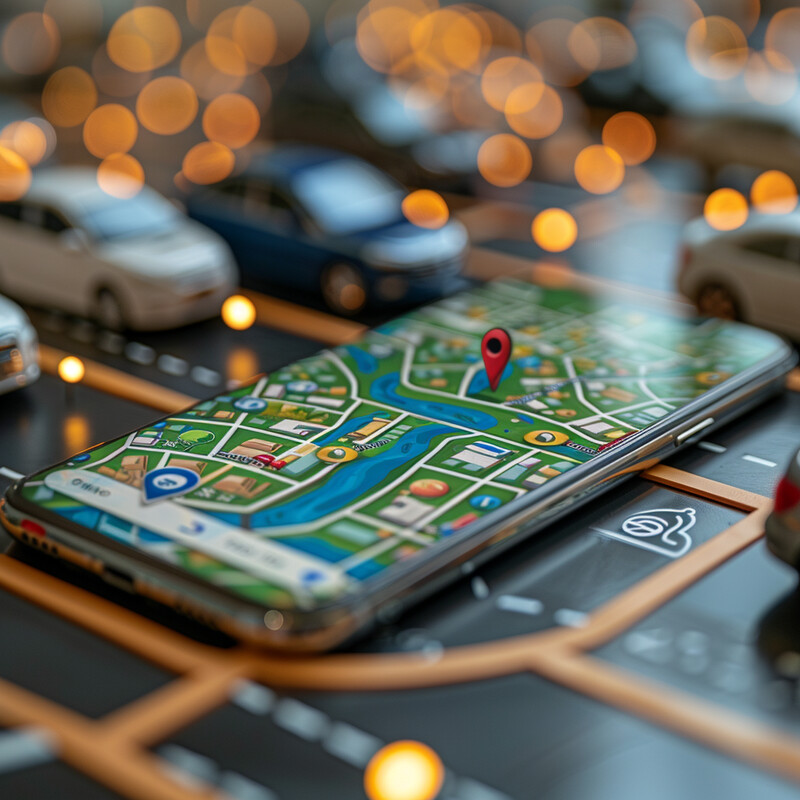
Studies have found that smart parking solutions can cut the time drivers spend searching for parking by up to 43%. For example, cities that implemented sensor-guided parking apps saw drivers locate spots much more quickly than before, often turning a 10-minute hunt into just a few minutes. This reduction in search time has big ripple effects: one report noted about a 30% decrease in local traffic congestion after smart parking systems were introduced, because fewer cars were circling the streets at any given time. Additionally, less circling means lower fuel consumption and emissions – a win for the environment. In Los Angeles’s smart parking pilot, officials recorded significant drops in vehicle miles traveled within pilot zones once real-time parking information became available. Similarly, San Francisco’s famous SFpark program (an early adopter of AI and dynamic pricing for parking) reported that average search time and parking-related congestion fell markedly (by dozens of percentage points) in the areas with smart parking versus those without. These facts underscore how effective AI-based parking optimization can be at saving drivers time and keeping traffic flowing in busy urban centers.
8. Dynamic Toll Pricing
Dynamic toll pricing involves adjusting road tolls or congestion charges based on real-time traffic conditions, and AI is the engine that makes these adjustments intelligently. The goal is to manage demand: when a highway or urban area is getting too congested, toll prices go up (via an AI algorithm), which encourages some drivers to travel at off-peak times or take alternate routes. Conversely, during lighter traffic, the tolls might decrease to encourage better use of the road. AI algorithms factor in traffic sensor data, speeds, and usage patterns to set these prices at optimal levels – often updating every few minutes. This approach has been used on express lanes (so-called “HOT lanes”) to guarantee they remain free-flowing: the AI raises the price until just enough drivers choose not to enter, maintaining speed targets. In city centers, congestion pricing schemes use AI to enforce charges for entering busy downtown zones, reducing gridlock. The outcome of dynamic pricing is a more balanced distribution of traffic, where road capacity is not overwhelmed because the pricing dissuades excess demand. Drivers who must travel in peak periods get a faster trip for a fee, while others adjust their travel plans to save money, collectively cutting down on jams. AI ensures these toll adjustments happen smoothly and respond promptly to any change in conditions.
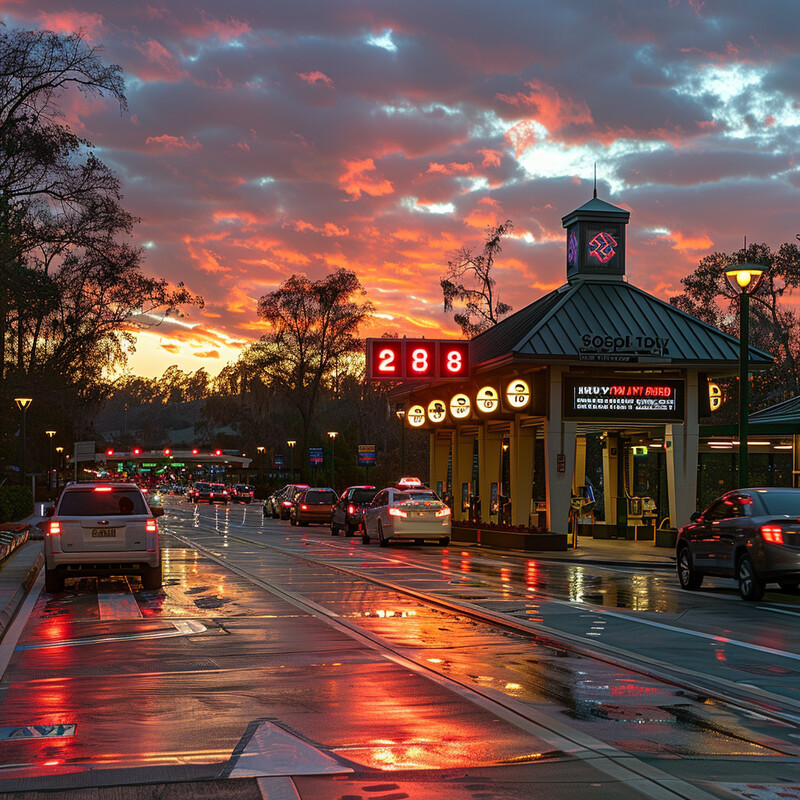
One of the most prominent examples of dynamic tolling is New York City’s new congestion pricing program, which began in early 2025. In just the first two months, traffic congestion in the tolled Manhattan zone dropped from about 25% to 17% on average. During the former rush-hour period (3–5 PM), congestion levels fell from 43% (before tolling) to around 30% with the congestion charge in place. This corresponded with drivers spending roughly 5 minutes less per 10 km traveled in the city center. The AI-driven system sets fees based on time of day and traffic volume, and the early data shows it successfully deterred enough peak-time car trips to significantly improve traffic flow. Additionally, the program reduced total vehicle kilometers traveled in downtown by millions, yielding cleaner air and quicker bus speeds. Other dynamic toll systems echo these benefits: for instance, highway express lanes in Virginia and Texas have maintained target speeds (e.g., >45 mph) over 90% of the time by using surge pricing to limit traffic when needed. The New York case, however, offers real-world proof at city scale – variable tolls controlled by an AI-based system can sharply cut congestion and shave travel times, making urban traffic more manageable.
9. Air Quality Monitoring
AI is increasingly integrated with traffic management to monitor and improve air quality. Cities deploy networks of air pollution sensors (measuring pollutants like NO2, PM2.5, ozone, etc.) and use AI to analyze the data in conjunction with traffic patterns. This allows authorities to pinpoint when and where traffic emissions are causing poor air quality – for example, an AI system might detect that a particular highway section has spiking pollution levels during the evening commute. In response, traffic control strategies (like adjusting signal timing to reduce idling or diverting traffic flows) can be activated to alleviate the hot spot. Some AI models even predict air quality impacts of traffic a few hours ahead, enabling preventative steps (such as issuing smog alerts or activating low-emission zones that restrict high-polluting vehicles). By continuously learning, AI systems can attribute changes in air quality to specific sources – distinguishing between pollution from traffic vs. industry vs. weather influences – which helps in crafting targeted policies. The overall impact is that AI gives city officials a powerful tool to ensure traffic management decisions are made with environmental data in mind. In effect, traffic AI isn’t just moving cars, but also safeguarding public health by keeping an eye on emissions and taking action to reduce harmful pollution from vehicles.

Research shows that smarter traffic management can yield huge environmental benefits. A 2025 study in Nature Communications projected that implementing AI-optimized traffic signals across major cities could reduce annual CO22 emissions by about 31.7 million tons (by mitigating congestion and stop-and-go traffic). This estimate came from analyzing 100 highly congested cities – the AI-driven improvements in traffic flow (like the 11% travel time reduction) directly translated to burning less fuel and hence cutting carbon emissions. To put that in perspective, 31.7 million tons of CO2 is equivalent to the yearly emissions of over 6.5 million cars. In addition to carbon, traffic-related pollutants like NOₓ would also diminish with smoother flows. For instance, London estimates that traffic congestion contributes around 15% of its road NOₓ emissions (over 2 million tons of CO2 yearly), so easing jams via AI has a significant pollution payoff. Cities like Los Angeles and Beijing are beginning to integrate AI air quality forecasts with traffic control; early programs have reported lower peak pollution levels on days when AI systems proactively thinned or slowed traffic to prevent smog buildup. These statistics underline that AI-based traffic management isn’t only about mobility – it also tangibly improves urban air quality by slashing the extra emissions produced during heavy congestion.
10. Driver Behavior Analysis
AI is transforming how we understand and influence driver behavior for safety. In modern vehicles and fleet management systems, AI-driven driver monitoring cameras observe the driver’s face and movements – they can detect if the driver is drowsy (eyes closing, head nodding) or distracted (looking away from the road or using a phone). When risky behavior is detected, the system might sound an alert or vibrate the driver’s seat as a warning. Beyond in-car monitoring, AI analyzes patterns in driving data (speeding events, hard braking, aggressive acceleration) collected via telematics devices. Fleet operators use these insights to coach drivers, scoring them on safety and giving feedback to correct bad habits. City traffic agencies also aggregate such behavior data to identify problem areas (e.g., a curve where many drivers brake hard could need better signage). Predictive analytics driven by AI can even identify drivers who are at high risk of an accident based on their history and real-time inputs, allowing interventions like targeted education or adjusted insurance premiums. By continuously learning from millions of miles of driving data, AI systems have begun to proactively prevent accidents – effectively becoming an ever-watchful co-pilot that can react to driver errors or lapses faster than human passengers could. In summary, AI’s analysis of driver behavior leads to safer driving through immediate feedback, long-term behavior change, and informed policy decisions addressing human factors in traffic.
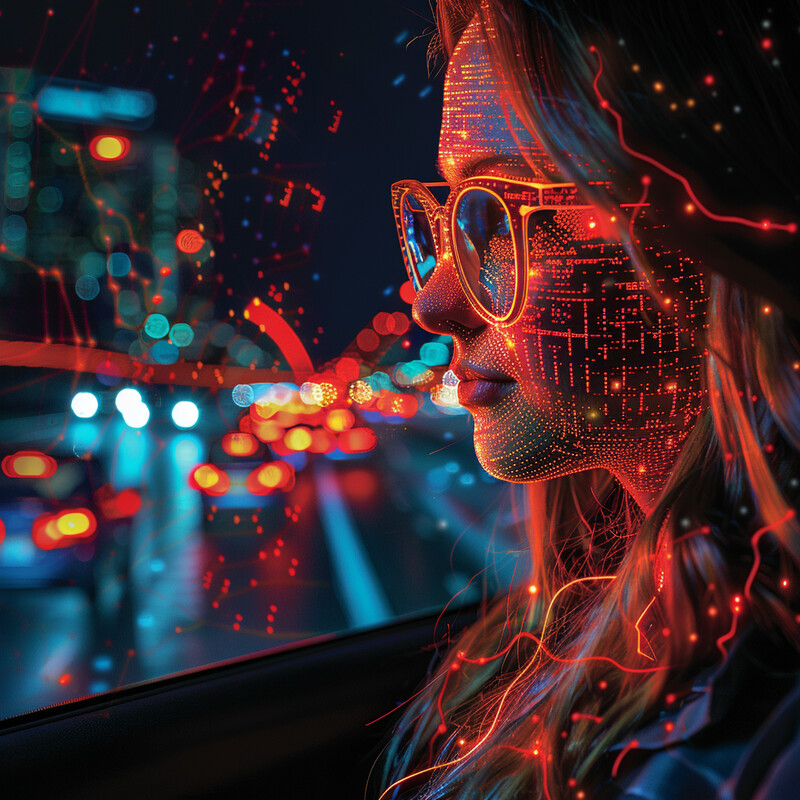
New in-vehicle AI safety systems are showing promising results in reducing crashes caused by human error. At the 2025 CES tech expo, automakers showcased AI-driven drowsiness detection that can sense when a driver is fatigued and intervene – these innovations are expected to cut driver-related accidents by up to 30% through early warnings and assisted driving featuresFor example, an AI camera tracking a driver’s eye blink rate and head position can detect microsleep moments; if the driver doesn’t respond to alerts, the car might even initiate an emergency stop. Insurers and fleets report that AI dashcams which detect texting or distraction have already led to significant accident reductions (in some fleet trials, collision rates dropped 20–25% after adopting AI driver monitoring). Regulators are taking notice too: the EU is mandating driver monitoring systems in new cars, anticipating fewer crashes from impaired or inattentive driving. Since over 90% of traffic accidents are due to human factors, these AI systems targeting fatigue and distraction represent a major opportunity to improve road safety. Early data from deployments in trucks and taxis indicate meaningful declines in dangerous behaviors and incidents once drivers know an AI “coach” is observing and ready to alert – supporting the projection that widespread use of such technology could nearly one-third of human-error crashes.